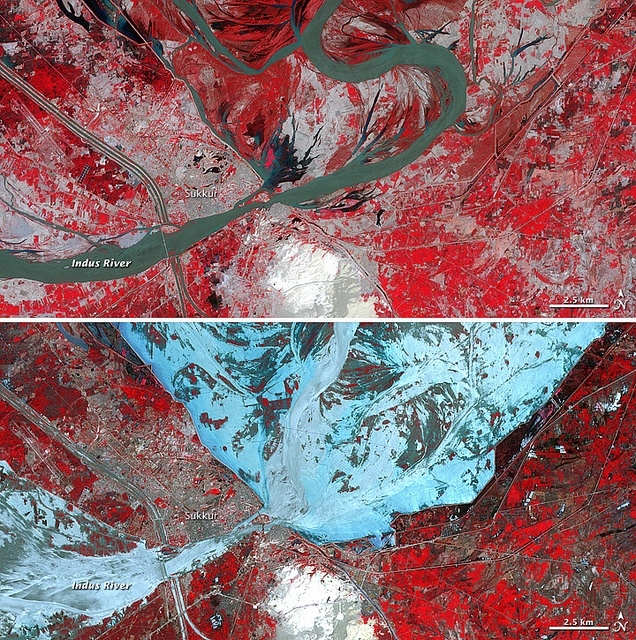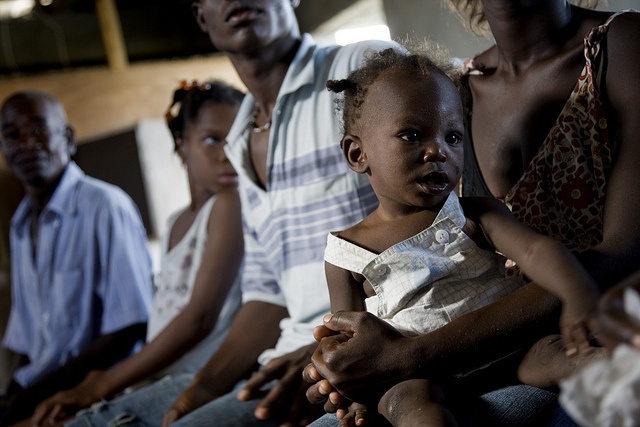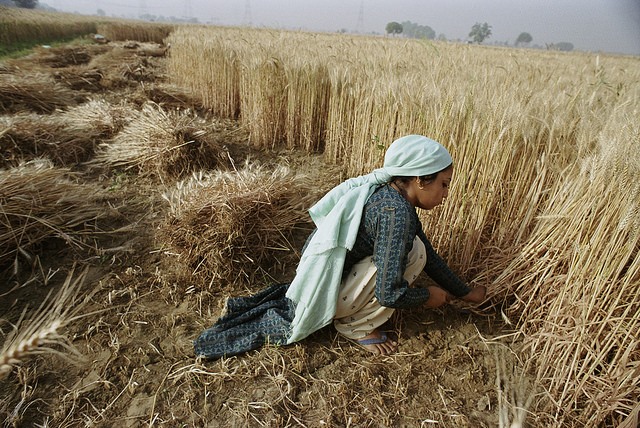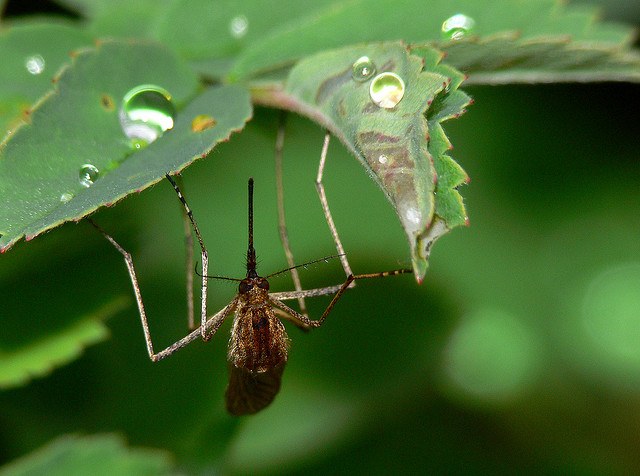Climate change and human health
Expert reviewers
Essentials
- Continued climate change will have far-reaching impacts upon our environmental systems
- This will in turn effect human health, with both readily apparent, immediate impacts, but also less obvious, indirect impacts
- Direct impacts include an increase in extreme weather events (heatwaves, floods, bushfires, and severe storms) and a potential spread in infectious disease and food poisoning
- Indirect impacts include the ongoing malnutrition caused by crop destruction or failures, and the social unrest and mental health problems caused by food shortages, potential loss of habitable land, and prolonged uncertainty
The Earth is getting hotter. Average global temperatures have increased by 0.7°C since the beginning of the 20th century. While most people prefer hot summer afternoons to cold frosty winter mornings, there is a limit to how hot we like to get, and limits on what our bodies can cope with. Extended periods of higher than average temperatures, known as heatwaves, can have a serious impact upon peoples’ health, particularly in very young, very old or sick people.
In Australia heatwaves are the most lethal of all natural disasters. The 2013 government report State of Australian Cities found that heatwaves were responsible for 2,887 deaths since 1890, which is more than bushfires, cyclones, earthquakes, floods and severe storms combined. Yet, this figure pales in comparison to a heatwave that hit Europe in the summer of 2003, where people’s unpreparedness and unfamiliarity with persistently high temperatures during July and August contributed to around 50,000 more deaths than the normal average summer figure.

And as the concentration of greenhouse gases, carbon dioxide (CO2) in particular, in Earth’s atmosphere continue to rise, and average global temperatures follow suit, an increase in heatwaves is just one of the aspects of climate change that will negatively affect human health. Less obvious, but even more serious are some of the knock-on effects of climate change. These include the large-scale threats that changes in climate conditions pose to various, often complex, processes in nature that then affect crop yields, food and water supplies and changes in the patterns of infectious disease transmission. The resulting social and economic fallout such as job losses, population displacement and conflict can also lead to severe, long-lasting negative health impacts.
Extreme events—not just heat
The most familiar and readily understood impacts of climatic conditions are those that act directly on human bodies and minds. It’s clear to see how extreme weather events such as heatwaves, floods, droughts, bushfires and severe storms have a direct impact on human life and health (although it’s important to note that, in some areas such as arid inlands, an increase in hot dry conditions may mean less fuel and, therefore, fewer fires).
The Black Saturday bushfires in Victoria in 2009 were the worst bushfires Australia has experienced, with 173 people killed, more than 5,000 people injured, 2,029 homes destroyed, countless animals lost and 4,500 km2 of land burnt. The prelude to the Black Saturday fires was a heatwave that affected much of south east Australia and, according to the Victorian Department of Health, caused 374 more deaths than would have otherwise been expected during that period.
Heatwaves are predicted to occur more often, and be more severe. Many communities, particularly well-off ones, may be able to adapt to warmer temperatures, which will probably prevent at least some of the heatwave related fatalities. However, those in developing countries or those without adequate resources to cope with extreme conditions will be most at risk. In some colder regions, a little bit of extra heat might not be such a bad thing for human health and comfort: milder winters may lead to a decrease in the number of deaths related to cold winter conditions.
In 2010, floods in Pakistan covered one fifth of the country in water, affecting 18 million people. At the same time, a record hot summer in Russia contributed to widespread forest and grass fires that severely damaged wheat crops, while the heat and smoke caused an estimated 56,000 excess deaths in Moscow and Western Russia.

Australia is prone to both droughts and flooding. Many of Australia’s weather extremes are caused by the El Niño Southern Oscillation (ENSO)—a climate cycle driven by atmospheric circulation patterns over the Pacific Ocean. ENSO alternates between El Niño phases, which generally result in drought conditions in eastern Australia, and La Niña phases, which usually lead to higher rainfall across much of the country. Although it is difficult to predict exactly how ENSO will be affected by climate change, there is evidence that it may intensify with ongoing climate change. If it does, our droughts and floods will probably become more severe. It is thought that the strong rains that resulted in the floods in Queensland in 2010–11 were intensified by unusually warm surface waters in the Pacific Ocean. Warmer surface ocean waters are a typical feature of La Niña conditions, and they can contribute extra moisture to the atmosphere.
In 2012, Super-Storm Sandy travelled through the Caribbean and northward through the Atlantic Ocean, making landfall in Jamaica, Cuba and the Bahamas. Along its path, it caused 286 deaths and brought with it torrential rains and high winds. The storm ultimately made landfall in New Jersey, USA, causing a massively damaging sudden increase in sea level known as a storm surge. Sandy also caused extremely high snowfalls in the Appalachian mountain region to the west of where the storm made landfall. Overall, Sandy was responsible for around US$65 billion worth of damage.
These are just a few of the record-breaking events that have occurred over the past few years. Such events appear to be on the rise around the world, causing serious harm, trauma, hardship and distress in many high-vulnerability populations in poorer countries. While none of these events can be said to be definitively caused by climate change, the fact that the extra energy contained in a climate system that is both warmer and moister means that extreme events such as these will probably occur more often. A small shift in average climate conditions can have a big impact upon extremes.
And it’s not only extreme events themselves, but their aftermath that threatens human health and well-being. Crops and public infrastructure can be destroyed, and water supplies and sewage systems can be damaged or contaminated. This can lead to outbreaks of diseases such as cholera and other diarrhoeal diseases, to which children are particularly susceptible.
Ongoing changes in temperature and rainfall may also have an effect on the air we breathe, increasing the amount of pollens and spores in the air, making their seasonality more frequent, and affecting levels of air pollution in urban-industrial areas.

Food security and nutrition
While some areas of the world will probably experience more periods of extreme drought and others floods and storms, the end result in terms of food security is the same: crops will be damaged, and harvests compromised. But that is only part of the story. As average global temperatures continue to rise, yields from staple crops in many (especially areas that are already warm) regions will decline, as will the nutrient quality of the food. Shifts in rainfall systems will have similar consequences.
Communities dependent on small-scale agriculture will be hardest hit by crop failures. The subsequent malnutrition will impair physical and mental development of young children and will make people more vulnerable to infectious and some later-adulthood diseases.

Shifting boundaries of infectious diseases
An increase in average global temperature and even greater increases in some regional temperatures will probably change the boundaries of some infectious diseases. Many diseases are transmitted between humans by other ‘ vector GLOSSARY vectorVector organisms carry and transmit infectious diseases to other living organisms. Mosquitoes, midges and ticks are examples of vectors. ’ organisms such as mosquitoes, midges and ticks. The vector for malaria, for example, is the Anopheles mosquito. Human susceptibility to vector-transmitted diseases depends on the relationships between the infectious microbe, its host organism, and humans, all of which can be affected by environmental change.
Increased temperatures and changing rainfall patterns may open up areas that were previously too cold or too dry for various vectors. This expansion of their habitat and seasonal activity increases the geographic spread of the diseases they carry. For example, regional warming over recent decades in the highlands of eastern Africa has resulted in the gradual expansion of malaria to higher altitudes.

Research from Sweden shows that the tick Ixodes ricinus, a vector for encephalitis, has expanded its habitat northwards and to higher altitudes as winters have become warmer. The numbers of roe deer, which are a host animal for the tick, have also increased.
However, along with habitat expansion there may also be habitat shrinkage: with regard to the disease shistosomiasis, which is transmitted by snails, it has been found that while climatic shifts in China may increase the area suitable for the disease-carrying snails, in Africa the snails’ habitats may actually diminish.
As well as infectious diseases are health concerns like food poisoning. Food-poisoning bacteria (such as Salmonella) grow best when the ambient temperature is in the range 35–37°C, and a study of food poisoning in Australia has found that as temperatures rise, so does the risk of food poisoning.
Social and economic impacts
Lurking in the shadows behind these more prominent impacts of climate change are the potentially even more far-reaching impacts of the changes to social and economic conditions driven by climate change will also have significant, if not so directly apparent, effects on human health. Shortages of food, water or habitable land may lead to conflicts and population displacements. The resulting increase in numbers of people in refugee camps and seeking asylum in other countries will also take their toll on peoples’ physical and mental health.
Even in more affluent communities, climate change could well lead to changing economic conditions. Possible consequences of this are job losses and uncertainty, circumstances that can also be detrimental to mental and physical well-being.
These less obvious effects of climate change will be far-reaching and significant. They may not have the immediate shock-value of a bushfire or large scale flood, but this in no way lessens their importance. They will be pervasive and prolonged.

Adapting to climate change
Affluent countries and social groups will be best able to adapt to climate change. They will be able to use technology to reduce the impacts of increasing temperature and maintain high-quality health and emergency infrastructures to reduce the damage wrought by extreme events such as flood, fire and drought. Poorer countries, unassisted, will be less well protected.
The best case scenario for average global temperature increase predicted by the 2013 Intergovernmental Panel on Climate Change (IPCC) is 1.6°C by 2100. That’s if we somehow manage to curb our emissions of greenhouse gases. If no international progress is made in abating emissions in the next decade or so, we’ll be looking at an average global temperature increase of around 4.3°C. Even a small increase in average global temperature increase can have a significant effect on extreme weather events, food yields, and the activity of disease vectors. Best evidence suggests Earth was last 4°C warmer than now around 20–30 million years ago, well before the appearance of humans, or even our great ape ancestors.
Neither uncertainty nor complacency should be allowed to prevent action to reduce greenhouse gas emissions. The risks to human (and natural) well-being are too great; prevention will be far better—and easier—than cure.





